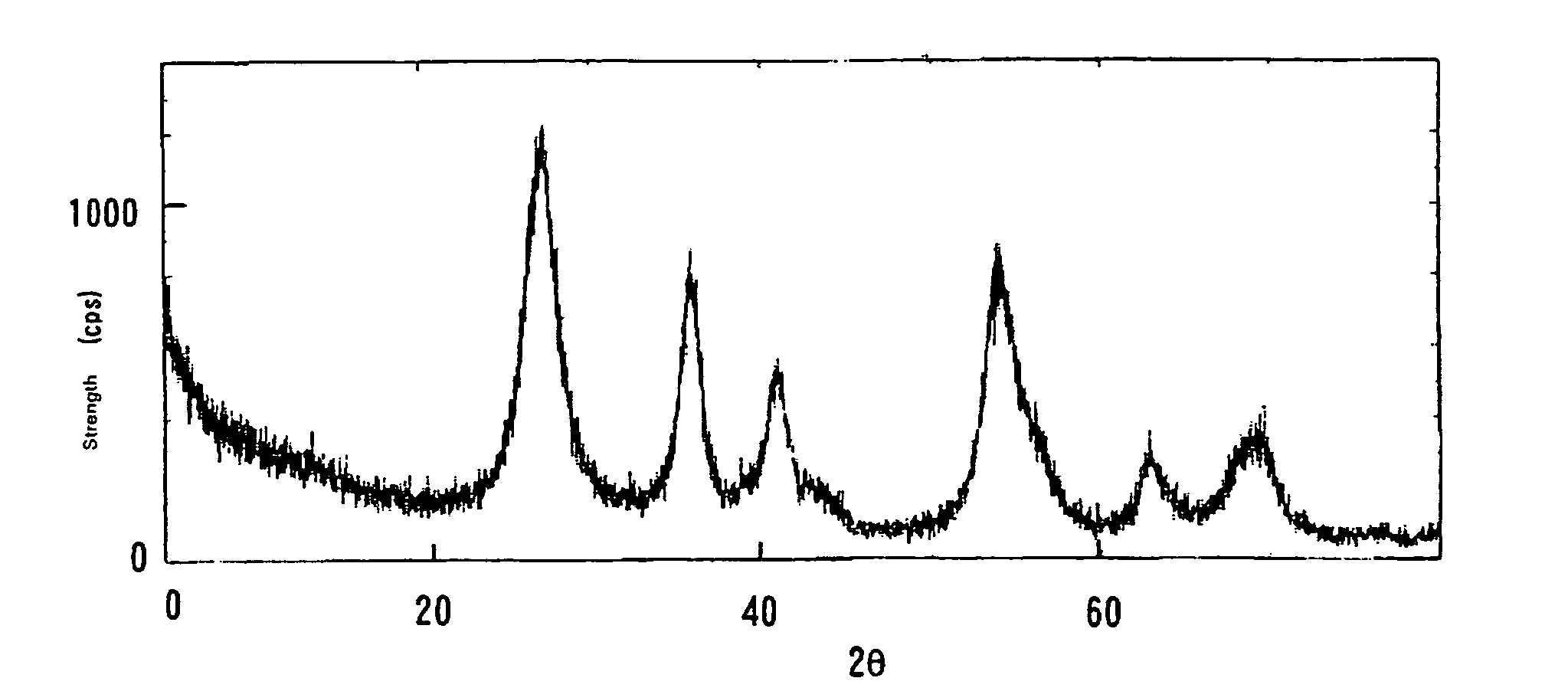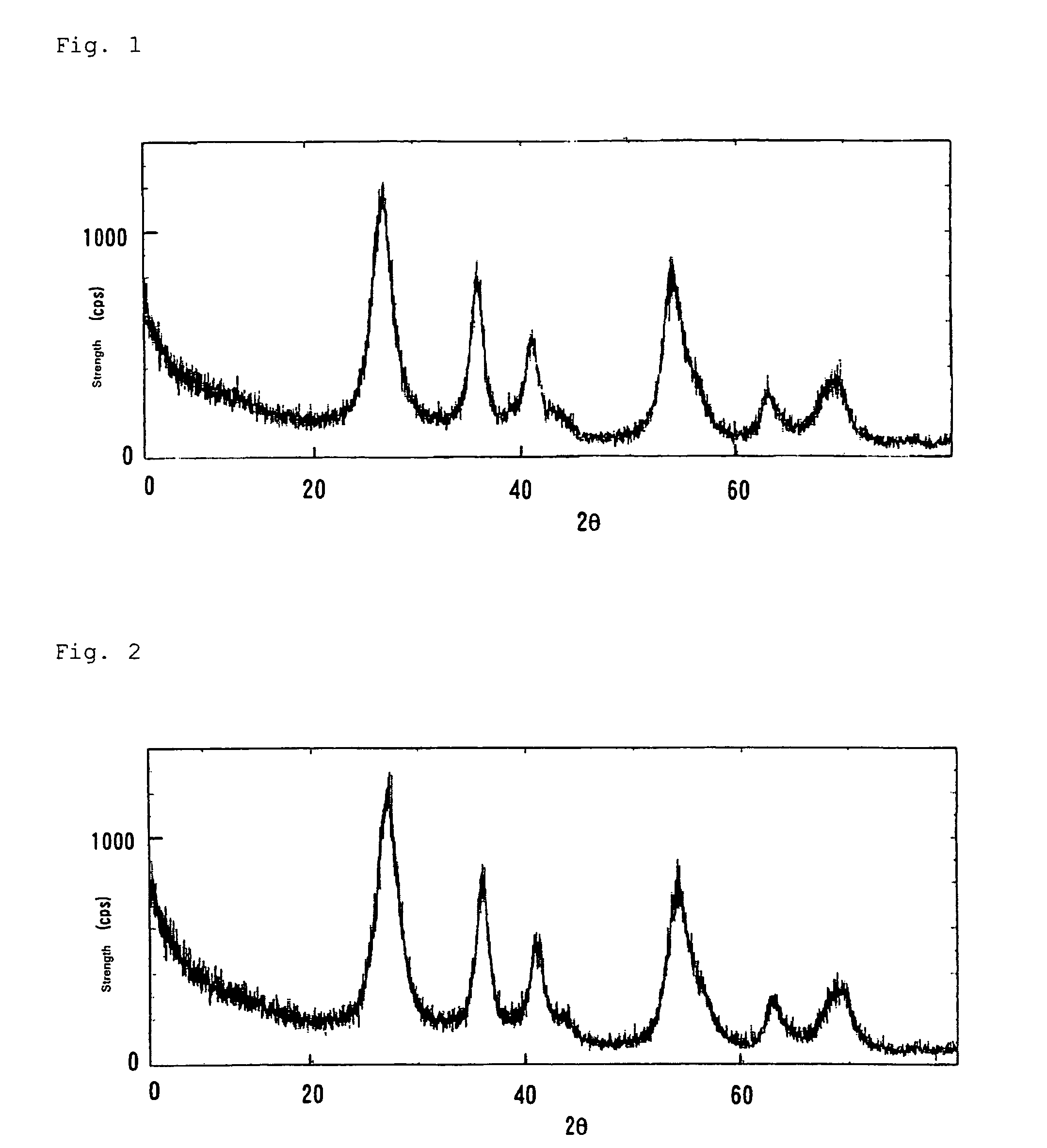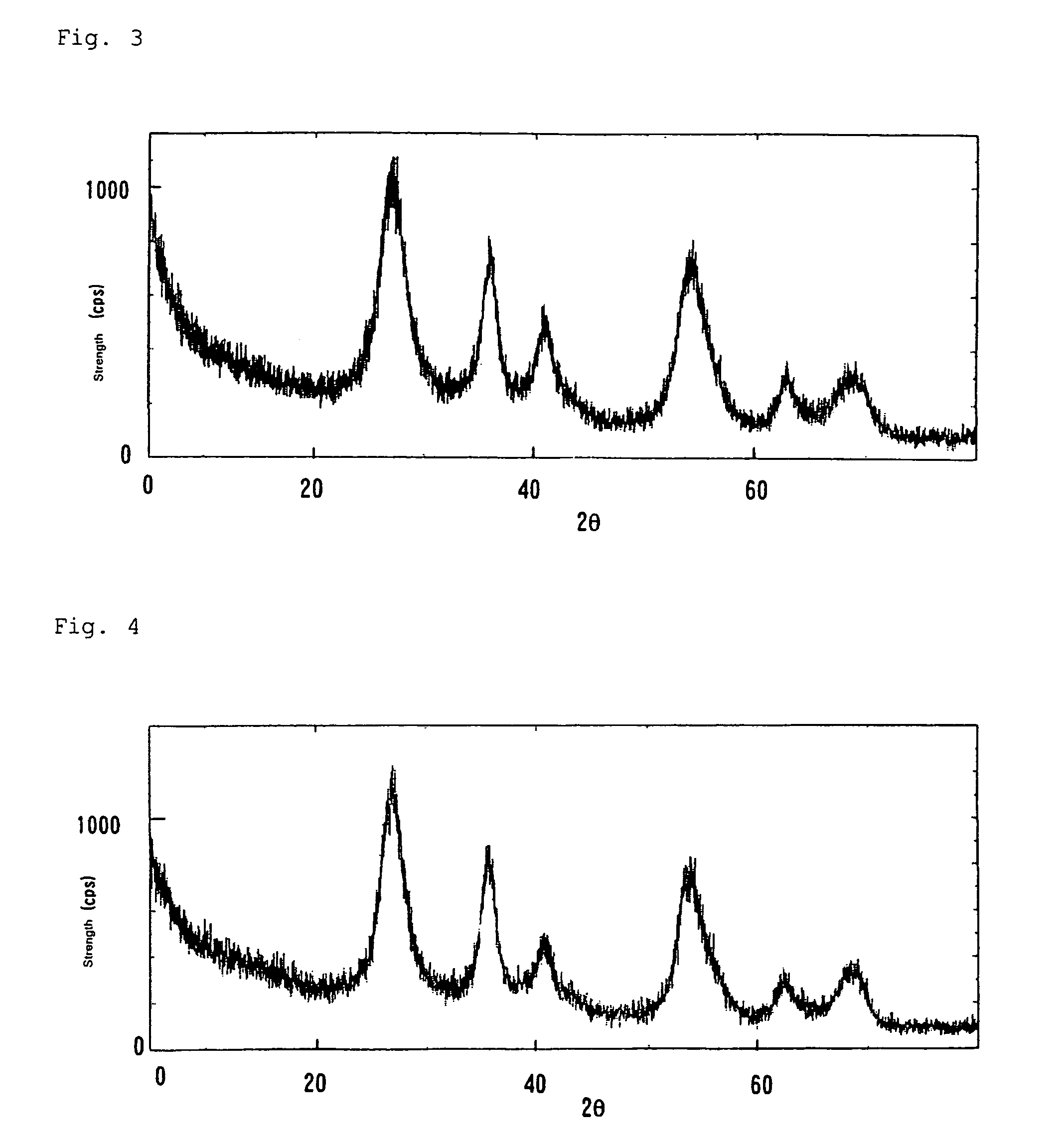Fine particles of tin-modified rutile-type titanium dioxide and method of making thereof
a technology of rutile-type titanium dioxide and fine particles, which is applied in the field of making fine particles of rutile-type titanium dioxide and their making methods, can solve the problems of grain diameter exceeding 20 nm, and not having etc., to achieve excellent photo-durability, excellent scratch resistance, excellent surface hardness, good rutile-type titanium dioxide
- Summary
- Abstract
- Description
- Claims
- Application Information
AI Technical Summary
Benefits of technology
Problems solved by technology
Method used
Image
Examples
example 1
[0127]Into a 100-ml eggplant type flask, 0.09 g of tin (IV) chloride pentahydrate was introduced and dissolved in 50 ml of ion exchange water, and 5 ml of aqueous hydrochloric acid solution of titanium dioxide chloride (containing 15 weight % of Ti) was added thereto. The pH of the solution was −0.1 (concentration of Ti introduced: 0.45, Sn / Ti molar ratio: 0.01). The reaction mixture was stirred using a magnetic stirrer and heated at 50 degree centigrade for 1 hour, and as a result, a white precipitate was obtained. Centrifugation was carried out, and the white precipitate was recovered and re-dispersed in ion exchange water. Ultrafiltration was carried out to obtain a sol containing 1.3 weight % of the solid content. Powder X-ray diffraction measurement and electron microscope observation of this solid content were carried out. The powder X-ray diffraction was measured after drying up by hot air at 120 degree centigrade for 2 hours. The results thereof are shown in FIG. 1. The crys...
example 2
[0128]The same operation as in Example 1 was carried out except that 0.27 g of tin (IV) chloride pentahydrate in Example 1 was used (concentration of Ti introduced: 0.45, Sn / Ti: 0.03). The solid content of the obtained sol was analyzed in the same manner as in Example 1. The result showed the rutile-type titanium dioxide having an average short axis and an average long axis of the crystal grain diameter of 5 nm and 8 nm respectively, and an average agglomerated particle diameter of 23 nm. The element molar ratio of Sn / Ti was 0.02. The refractive index of the solid content was evaluated in the same manner as in Example 1 to obtain n=2.72. The results of powder X-ray diffraction are shown in FIG. 2.
example 3
[0129]The same operation as in Example 1 was carried out except that 0.9 g of tin (IV) chloride pentahydrate in Example 1 was used (concentration of Ti introduced: 0.45, Sn / Ti: 0.1). The solid content of the obtained sol was analyzed in the same manner as in Example 1. The result showed the rutile-type titanium dioxide having an average short axis and an average long axis of the crystal grain diameter of 5 nm and 8 nm respectively, and an average agglomerated particle diameter of 20 nm. The element molar ratio of Sn / Ti was 0.06. The refractive index of the solid content was evaluated in the same manner as in Example 1 to obtain n=2.65. The results of powder X-ray diffraction are shown in FIG. 3.
PUM
| Property | Measurement | Unit |
|---|---|---|
| particle diameter | aaaaa | aaaaa |
| grain diameter | aaaaa | aaaaa |
| refractive index | aaaaa | aaaaa |
Abstract
Description
Claims
Application Information
 Login to View More
Login to View More - R&D
- Intellectual Property
- Life Sciences
- Materials
- Tech Scout
- Unparalleled Data Quality
- Higher Quality Content
- 60% Fewer Hallucinations
Browse by: Latest US Patents, China's latest patents, Technical Efficacy Thesaurus, Application Domain, Technology Topic, Popular Technical Reports.
© 2025 PatSnap. All rights reserved.Legal|Privacy policy|Modern Slavery Act Transparency Statement|Sitemap|About US| Contact US: help@patsnap.com



